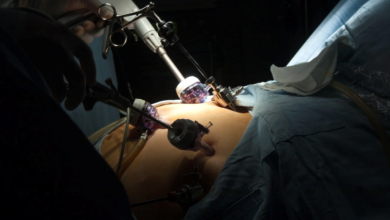
How Back Traction Machines Are Changing the Landscape of Chiropractic Care
Chiropractic care has always centered on noninvasive treatment options for spinal health, but technology is now playing a larger role in transforming patient outcomes. One of the most impactful innovations in recent years has been the use of traction machine back systems. These machines offer a precise and controlled way to alleviate spinal pressure, making them a valuable tool for chiropractors seeking long-term, sustainable results for their patients.
As more practices adopt spinal traction technology, patients are gaining access to more advanced care options that promote faster recovery and long-term pain relief. Understanding how these machines fit into modern chiropractic treatment helps reveal why they’re becoming a core part of the industry.
Targeted Spinal Relief Through Traction
Back traction machines are designed to apply gentle, sustained force to specific segments of the spine, helping to relieve compression on discs and nerves. This process can improve hydration within spinal discs, promote healing, and reduce pain from conditions such as herniated discs, sciatica, or facet joint syndrome.
In clinical settings, traction machines have become particularly useful for patients with long-standing back issues that haven’t responded well to manual adjustments alone. Traction allows chiropractors to expand their treatment approach with an added layer of precision. Research and clinical experience show howlumbar traction devices can help with herniated discs, especially when integrated into a structured, ongoing care plan.
How Traction Machines Support Chiropractic Growth
As the demand for nonsurgical spinal care grows, traction systems help chiropractors meet patient expectations for advanced, effective treatments. Unlike traditional adjustments, traction machines can be programmed for different settings, accommodating a wide variety of spinal conditions and body types.
With the ability to customize each session, chiropractors gain the flexibility to design treatment plans that are safer, more consistent, and easily adaptable over time. This not only improves outcomes but also helps retain patients who are seeking more comprehensive care options beyond manual manipulation.
While clinical benefits are important, the decision to incorporate these machines also hinges on operational needs. Selecting the right equipment involves evaluating features such as adjustability, interface simplicity, and comfort. Practitioners exploring new technology can benefit from understanding key features to look for when choosing a traction machine for clinics, helping ensure the equipment aligns with both therapeutic and business goals.
Patient Experience and Comfort Matter
As chiropractic care evolves, so do patient expectations. Comfort during treatment is a major factor in whether patients stick with their care plans. Back traction machines offer a more relaxed, low-stress alternative to more aggressive methods. Many patients report reduced anxiety and better engagement with their sessions when traction is used.
Adjustable positioning, soft restraints, and precise control over force contribute to a more pleasant experience overall. When treatment feels less intimidating, it naturally encourages better participation and consistent follow-through. For clinics, this translates into stronger patient relationships and improved long-term outcomes.
Conclusion
Back traction machines are redefining what chiropractic care can offer in terms of precision, comfort, and long-term relief. These machines make it possible to treat complex spinal conditions more effectively while minimizing patient discomfort. For chiropractors, traction technology represents a shift toward more advanced, patient-focused care that adapts to individual needs.
As traction systems continue to evolve, they are becoming a vital part of the modern chiropractic toolkit. Clinics that invest in this technology are better positioned to offer long-lasting relief, retain patient loyalty, and stand out in a growing market focused on results-driven, noninvasive care.




